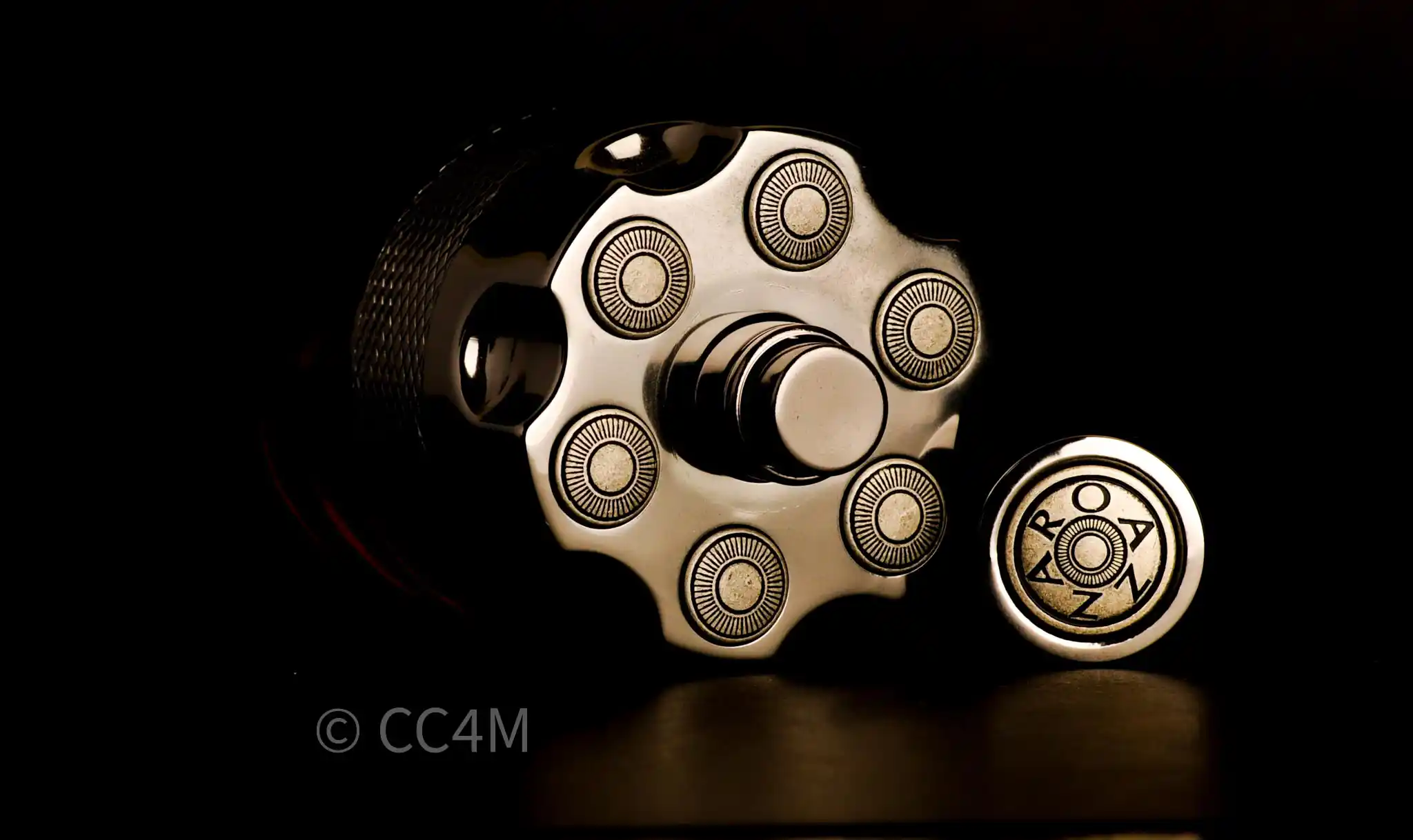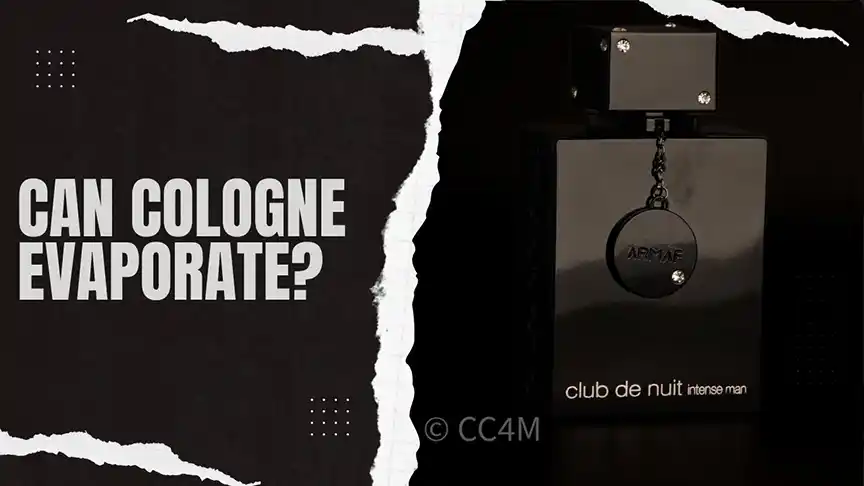We like to buy colognes so that we can smell nice. But what happens if we leave the cap off of a bottle of cologne? Does cologne evaporate without a cap? If so, does it alter the scent and will the cologne go bad? Learn how evaporation can happen with a bottle of cologne and how it can change the scent.
Will Cologne Evaporate From The Bottle
Cologne and Perfume can evaporate from the bottle if it is not stored properly. Cologne evaporation from the bottle is an issue that many fragrance enthusiasts face, often leading to a reduction in scent quality and longevity. Understanding the factors contributing to evaporation can help preserve the fragrance and ensure it maintains its original characteristics for an extended period.

One of the primary factors causing cologne to evaporate from the bottle is the nature of alcohol, which serves as the base for most fragrances. Alcohol is a volatile substance, meaning it easily evaporates at room temperature, facilitating the release of fragrance molecules into the air. This volatility is crucial for the proper development and projection of the scent when applied to the skin. However, this also means that alcohol can evaporate from the bottle if it is not properly sealed or stored, leading to a decrease in fragrance concentration and an alteration in the scent profile.
The design of the cologne bottle also plays a significant role in evaporation. The material used for the bottle, such as glass, plastic, or metal, can affect the rate of evaporation. Glass is typically the most effective at preventing evaporation, as it is less permeable than plastic. Additionally, the bottle’s cap and closure mechanism contribute to the rate of evaporation. If the cap does not create an airtight seal or is damaged, it can allow alcohol and fragrance molecules to escape over time. Leaving the cap off may help the fragrance evaporate.
Storage conditions greatly influence the rate of cologne evaporation from the bottle. Factors such as temperature fluctuations, humidity levels, and exposure to sunlight or artificial light can accelerate the evaporation process. Storing cologne in a cool, dark, and dry place helps minimize these effects and prolong the shelf life of the fragrance. Moreover, improper sealing of the bottle, such as a loose or damaged cap, allows air to enter and facilitates evaporation.
In conclusion, cologne evaporation from the bottle is primarily caused by the volatile nature of alcohol, bottle design, and storage conditions. By understanding these factors and taking appropriate measures, such as proper storage and ensuring an airtight seal, fragrance enthusiasts can preserve the quality and longevity of their colognes and enjoy their favorite scents for an extended period.
What Causes Cologne To Evaporate?
External factors can significantly influence the rate at which cologne evaporates from the bottle, affecting its quality, longevity, and overall performance. The primary external factors that contribute to cologne evaporation include temperature, humidity, light exposure, and airflow.
- Temperature: Temperature fluctuations can cause the alcohol and other volatile components within the cologne to evaporate more quickly. Higher temperatures increase the kinetic energy of the molecules, making them more likely to escape the liquid and transition into a gaseous state. Storing cologne in a cool and stable environment helps to slow down the evaporation process, preserving the fragrance’s quality and longevity.
- Humidity: Humidity levels play a role in cologne evaporation from the bottle. Low humidity environments can accelerate evaporation by allowing the alcohol and other volatile components to escape more easily. In contrast, higher humidity levels can slow down the evaporation process, as the moisture in the air reduces the rate at which the alcohol can evaporate. Maintaining a moderate humidity level in the storage area can help to minimize the impact of humidity on cologne evaporation.
- Light exposure: Exposure to sunlight or artificial light can cause cologne to evaporate more quickly and degrade its quality. Ultraviolet (UV) light, in particular, can break down the chemical bonds in the fragrance molecules, altering the scent profile and reducing its shelf life. To prevent this, it is essential to store cologne in a dark, cool place, away from direct sunlight or strong artificial light sources.
- Airflow: Increased airflow around the cologne bottle can contribute to faster evaporation. When the air around the bottle is in motion, it carries away the evaporated alcohol and other volatile components, creating a lower concentration of these substances in the surrounding air. This process promotes further evaporation as the cologne continually releases more molecules to maintain equilibrium. Storing cologne in an area with minimal airflow, such as a drawer or cabinet, can help to slow down the evaporation process.
By considering these external factors and taking appropriate measures to control them, one can minimize the rate of cologne evaporation from the bottle. Proper storage and handling can preserve the quality, longevity, and performance of the cologne, ensuring that it maintains its original characteristics for an extended period.
Why Is It Important To Prevent Evaporation?
It is important to store cologne properly so that it does not evaporate. If some of the alcohol in the bottle evaporates, then the fragrance may change. This can alter the scent of the product. This is not good. After all, you bought the cologne for its particular scent. You do not want your cologne to go bad and expire. Changing the composition of the alcohol, water and fragrance components can alter the scent.
How To Prevent Cologne Evaporation
Preserving the quality and longevity of cologne is essential for fragrance enthusiasts. Proper storage and maintaining the right temperature are crucial factors in preventing cologne from evaporating and ensuring that it retains its original characteristics for an extended period. Here are some insights on how to keep cologne from evaporating by focusing on proper storage and temperature management.
Proper storage is critical in preventing cologne evaporation. Storing cologne in a cool, dark, and dry place is the ideal way to preserve its quality. The bathroom, which is often subject to fluctuating temperatures and high humidity due to showers and baths, should be avoided. Instead, consider placing the cologne in a bedroom drawer, a cabinet, or a dedicated storage box. These locations are less prone to temperature variations and provide protection from direct sunlight, which can break down the chemical bonds in the fragrance molecules and alter the scent.
Managing the temperature of the storage environment is another key aspect of preserving cologne. High temperatures can increase the evaporation rate of the alcohol and other volatile components in the cologne, reducing its shelf life. Aim to maintain a stable temperature of around 60-65°F (15-18°C) in the storage area. This can be achieved by storing the cologne away from direct heat sources, such as radiators or heating vents, and avoiding areas with direct sunlight exposure. In regions with extreme temperature variations, consider using a temperature-controlled storage unit or a wine cooler to maintain a consistent environment for the cologne.
Also, you need to make sure that the cologne bottle is sealed properly to prevent evaporation. Regularly inspect the cap or closure mechanism of the bottle to ensure it creates an airtight seal. If the cap is damaged or does not fit securely, consider transferring the cologne to another airtight container or contacting the manufacturer for a replacement.
Finally, handling the cologne bottle with care can help to minimize evaporation. Avoid shaking or unnecessarily agitating the bottle, as this can increase the likelihood of the fragrance molecules escaping. Additionally, when using the cologne, try to minimize the contact between the bottle opening and your skin or any other surface, as this can introduce contaminants that may affect the scent and evaporation rate.
Preventing cologne evaporation is achievable through proper storage, temperature management, and careful handling of the bottle. By following these guidelines, you can preserve the quality and longevity of your colognes.

